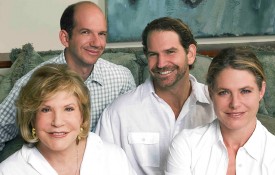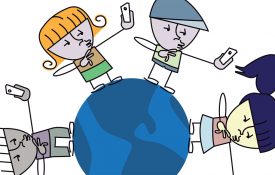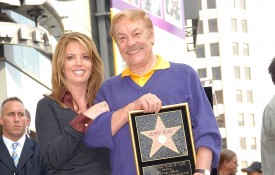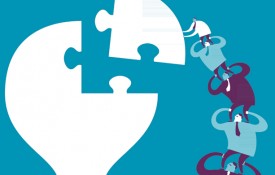The greater Los Angeles area is disparate and gigantic. There is no easy way to describe the region, its people, and its culture. Hence, negative stereotypes (the easy answers) that have come to be associated with Los Angeles must be dispelled. More important, the ludicrous assertion that Los Angeles is what Hollywood makes it out to be, is patently false. That Los Angeles is mythologized. That Los Angeles is a veneer painted on the city’s surface with the clumsy hands of a distracted world. The city that thrives beneath the false exterior, supplied by people who have never once stepped foot on LA soil, exists in such a state because it doesn’t care. Los Angeles doesn’t care that the world thinks it is full of fakers, rich rude kids, backstabbing actors, leathery nutcases, entertainment executives, surfers, soul-searchers, and immigrants. Why? Because Los Angeles is too busy being better than anyone can imagine.
I will be the first to admit it: Los Angeles used to be a city full of those negative stereotypes come true. It was dirty, violent, corrupt, and downright strange for a while. But, in the early ’9 0s, something started happening to LA. Whether it was the wake-up call delivered by the Rodney King incident, the startling rise in gang violence, or simply the shuttering of the last automobile plant in the area, I can’t be sure. But LA got the message. At some point, the city of Los Angeles decided that it would no longer be the Los Angeles everyone else said it was, and instead decided it would be the city it wanted to be. It allowed Hollywood and the entertainment industry to continue capitalizing on its negative reputation, building its image overseas and through media. Los Angeles told the entertainment industry to make a cult of themselves, and the world bought it. Hollywood caught the collective attention of the planet while LA quietly did things that actually mattered.
0s, something started happening to LA. Whether it was the wake-up call delivered by the Rodney King incident, the startling rise in gang violence, or simply the shuttering of the last automobile plant in the area, I can’t be sure. But LA got the message. At some point, the city of Los Angeles decided that it would no longer be the Los Angeles everyone else said it was, and instead decided it would be the city it wanted to be. It allowed Hollywood and the entertainment industry to continue capitalizing on its negative reputation, building its image overseas and through media. Los Angeles told the entertainment industry to make a cult of themselves, and the world bought it. Hollywood caught the collective attention of the planet while LA quietly did things that actually mattered.
What, might you say, did LA do? Well, aside from pioneering email (thank UCLA for that one), Los Angeles has also provided this nation with the future. After spending almost a year in transit, the Mars Curiosity Rover landed at the Bradbury Landing Site on August 6, 2012. The rover was designed with various functions in mind but only one goal: planetary habitability studies in preparation for future human exploration. The Curiosity Rover was designed and built at the Jet Propulsion Lab, managed by Caltech and located in Pasadena. Ray Bradbury, the science fiction author for whom the landing site is named, was a long-time resident of Los Angeles. Figuratively, as well as literally, Los Angeles brought this country the future. While Bradbury’s fictitious first expedition in “The Martian Chronicles” takes place in 1999, the only place anywhere close to the future in 2012 is JPL. And if it’s not them, then it will be Elon Musk and SpaceX, the first and only privately owned company to make a successful payload delivery to the International Space Station.
But Los Angeles has more than just space working for it. Every day, LA wakes up and prepares, not for today, but for tomorrow. Los Angeles has had a consistent habit of investing in the future in a way I have not seen any other state or community do, except China. I guess that’s why the greater Los Angeles area has the third largest GMP (Gross Metropolitan Product) outside of greater NYC and Tokyo, why the ports of Long Beach and Los Angeles are the busiest in the nation, handling more cargo than the next three ports combined, and why there are more registered businesses in Los Angeles than anywhere else in the nation. And I think the fact that there are more women – and minority- owned businesses here than anywhere else in the country is more proof within the pudding. The simple reality is that the entertainment industry is the second largest industry in Los Angeles, behind international trade. Los Angeles is not the one-trick pony your cousin in Kansas thinks it to be. Indeed, your Kansas kin wouldn’t be able to buy inexpensive goods at WalMart if the ports of LA didn’t exist.
All of this economic growth comes from the major investments Los Angeles has made in education. You may not realize it, but Los Angeles is a college town that puts Boston to shame. There are over 60 institutions of higher education in the greater LA area. Caltech, UCLA, and USC are all nationally top-ranked engineering schools. Add to those three schools UC Irvine, Harvey Mudd, and Occidental, and you have six of the nation’s best universities producing thousands of scientists and engineers every year. Caltech has had a whopping 31 Nobel Prize winners grace its halls, five of whom still teach at the school. Did I fail to mention that Caltech is the school that helps manage JPL right now in conjunction with NASA? The area is loaded with engineering and aerospace talent to begin with—135 aerospace firms call LA home—and it brings in more and more each year from around the country.
Due to the heavy investment in education, larger companies began taking notice of Los Angeles. In the late ’90s and early 2000s, it was my company, Activision, that was the first big tech giant to come to LA. Soon, we spun off Jamdat Mobile, which became EA Mobile when it sold for $680M. Overture in Pasadena was purchased by Yahoo. Bill Gross, the most innovative and impressive entrepreneur I have ever met, arrived with Idealab and took the town by storm with NetZero and others. Video game producers began moving here in the early 2000s, taking advantage of the path I had begun to pave and the close ties with the entertainment industry that were possible. Blizzard and EA moved in, shifting the industry’s focus. These were more stable tech companies and the city mostly missed out on the trouble when the dot-com bubble burst. It was only after and the dust had settled that I learned how fortunate I was to be here and not in Palo Alto. The tech companies in LA grew stronger and smarter because of it, learning from the mistakes of their fallen brethren.
In 2011, Google leased an office in Santa Monica.
By the time Google arrived, the world had undergone a technological rebirth. Myspace and Facebook redefined what it meant to market and collect data. Google had long been working on analytics never before possible. Companies began taking advantage of the increase of time on and connectability to the Internet to market and display new items in inconceivable ways. Twitter had redefined news; the world had become much faster, and subcultures sprang forth from forums like memes in an election. Make no mistake, at this point in the timeline, Los Angeles had yet to make any sort of debut on the national scale – instead it remained hidden behind national tragedies and its omnipresent shield dubbed Hollywood.
And while the nation fumed over Obama and the housing crisis – while Facebook rose and Myspace fell to the wayside, Los Angeles began strengthening its bonds within. You see, a solid foundation of talent from homegrown education will only do so much. Aside from enticing more talent to arrive each year – something Los Angeles has no difficulty doing – you also need to ensure that whatever brains are bred in the city wind up staying. Connections must be built, bonds must be forged, and slowly the city, once disparate (still disparate, what am I saying?), inched closer to a cohesive identity. The video game industry began cozying up to the entertainment industry. The mobile and tech industries then took hold of the video game industry. Soon, the other industries of the city, such as fashion and manufacturing, took advantage of the growing tech scene to get their products out easier. What Los Angeles wound up with was a network of highly motivated, incredibly talented, and constantly connected entrepreneurs who all had the collective realization that they could surf every morning, code through lunch, and make buckets of money capitalizing on the things around them. The things Los Angeles had built for them to take. The things they had to bring to the rest of the nation.
From my humble Activision, not so humble anymore, sprang Sky Dayton and others. From Sky came Jamdat, Earthlink, Viddy, Boingo and Lowermybills. Lowermybills exposed Matt Coffin to BillShrink and Ad.ly. The Myspace Mafia moved here following the site’s demise, but so gave rise to the entrepreneurial insights of Josh Berman at BeachMint, Chris DeWolfe of SGN, and Richard Rosenblatt of DemandMedia. LegalZoom’s Brian Lee took his connections and decided to change the face of online clothing retail and marketing singlehandedly. Through Lee came Teeology, ShoeDazzle, and StyleSaint. By the time Google arrived, the area was one quarter shy of tipping the proverbial Los Angeles pusher-game.
Now, just a year since Google arrived, I can tell you that the gloves have come off and Los Angeles is ready to get its hands stained. As the first wave of entrepreneurs got rich, they made a critical decision: they would  stay and reinvest in the city rather than leave like they had from Silicon Valley. That first group of networkers made a commitment to the greater Los Angeles area and decided to re-invest. Accelerators became crucial to the tech startup experience; Amplify, Muckerlab, Launchpad, and my own StartEngine developed quickly. Venture capitalist groups like Crosscut Ventures and New World Ventures moved in to provide funding for the next big company. Success was easy as universities, like UCLA, began priming our accelerators with their own. Even the Mayor was forced to create a special council of innovation and industry just to keep up with the pace of the tech industry in his city. Now, there are hundreds of startups on the west side, and dozens more spread throughout the city. They stretch to places like Silver Lake and Downtown, Pasadena and Hollywood.
stay and reinvest in the city rather than leave like they had from Silicon Valley. That first group of networkers made a commitment to the greater Los Angeles area and decided to re-invest. Accelerators became crucial to the tech startup experience; Amplify, Muckerlab, Launchpad, and my own StartEngine developed quickly. Venture capitalist groups like Crosscut Ventures and New World Ventures moved in to provide funding for the next big company. Success was easy as universities, like UCLA, began priming our accelerators with their own. Even the Mayor was forced to create a special council of innovation and industry just to keep up with the pace of the tech industry in his city. Now, there are hundreds of startups on the west side, and dozens more spread throughout the city. They stretch to places like Silver Lake and Downtown, Pasadena and Hollywood.
Now ends the Los Angeles masquerade. As the curtain of 2013 is drawn back, it will prove to reveal something startling. The entertainment industry, which the whole country has watched intently for so long, will experience a “great and powerful Oz” moment. As the new year unfolds, it will become clear how closely intertwined the fate of this city and the entertainment industry have become with the fate of technology. As we move forward, it will become clear that the tech and video game industries have become like blood veins running through the entertainment industry, keeping it alive for another generation. What is funniest to me, is how all of those people only concerned with Los Angeles as an easy-to-define-city, all those stubborn people not from LA, will fail to see this when it is right in front of their eyes. Los Angeles is built on three pillars called Technology, Industry and Trade, yet everyone too blind to see this will continue to invest in the entertainment industry, thinking it is the real money maker.
It’s easy to tell who is and who isn’t from LA now. If you’re from LA, you can see that Hollywood doesn’t need to be killed – it’s just a buttress for the pillars. If you’re from LA you know that technology, industry, and trade are what make this city great. If you’re not from LA, you keep thinking that its about the image. As 2013 comes and the boom gets bigger, it’ll be evident which side of Los Angeles will show. Every day I look at meetups and every day I am amazed at how many more are scheduled for this city. The people are restless and their minds are unquiet. The city is primed like a powder keg. Everything has come together for Los Angeles. Every piece of this place has been packed with plastique, an explosive I call entrepreneurialism. This is the year of the Los Angeles boom.
Howard Marks is the CEO of StartEngine,
Los Angeles’ largest startup accelerator.













































